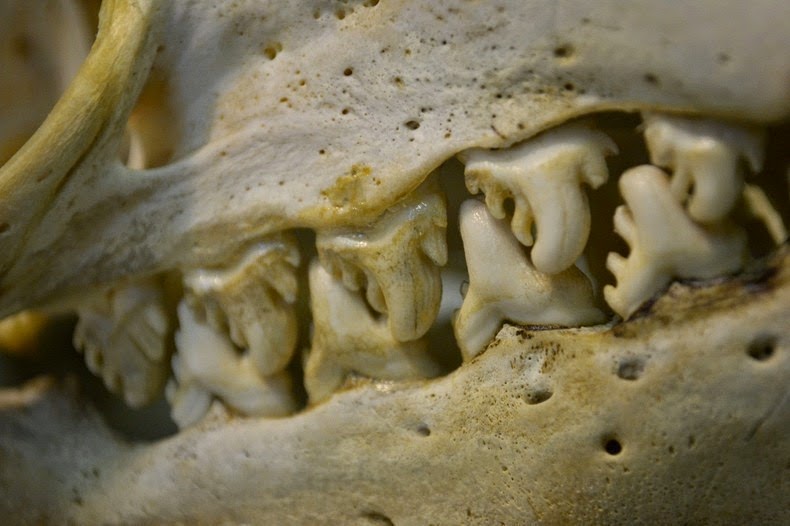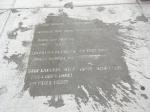Crabeater seals (Lobodon carcinophaga) are the most abundant species of seals and are widely distributed along the pack ice that surrounds Antarctica. Despite their name, the crabeater seal does not actually eat crabs, instead feeding almost exclusively on Antarctic krill. To help them separate krill from seawater, the seals posses complex serrated teeth with multiple cusps. The structure of their teeth is reflected in their scientific name Lobodon which means lobed teeth. The name carcinophaga comes from the Greek word "karkinos" meaning crab and "phagein" which means to eat. The seals feed by swimming through schools of krill with their mouth open. Having trapped both krill and water in the cavity of the mouth, the seal closes its jaw and sieves the water out using their sophisticated teeth. A ridge of bone fills the gap between the teeth and the back of the jaw, stopping prey from escaping from the mouth while feeding.
An adult crabeater seal grow over 2 meters in length and can weigh around 200 kg, while large seals can be over 300 kg in weight. 90% of their diet comprise of the Antarctic krill, the single species with the greatest biomass on the planet. The high abundance of the crabeater seals is a testament to their extreme success in killing Antarctic krill.

© Amusing Planet, 2014.









Comments